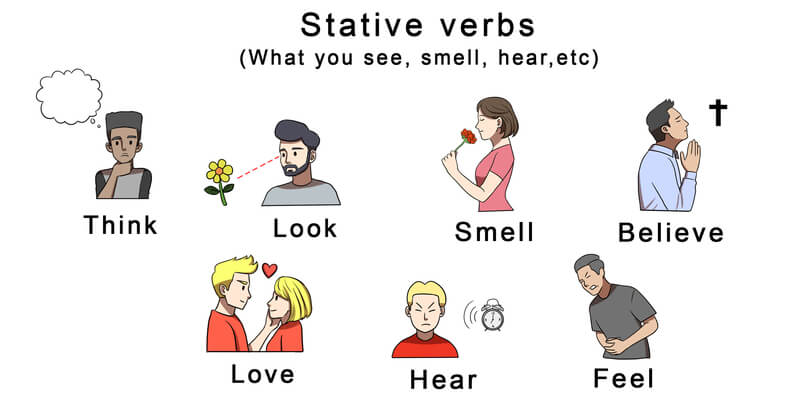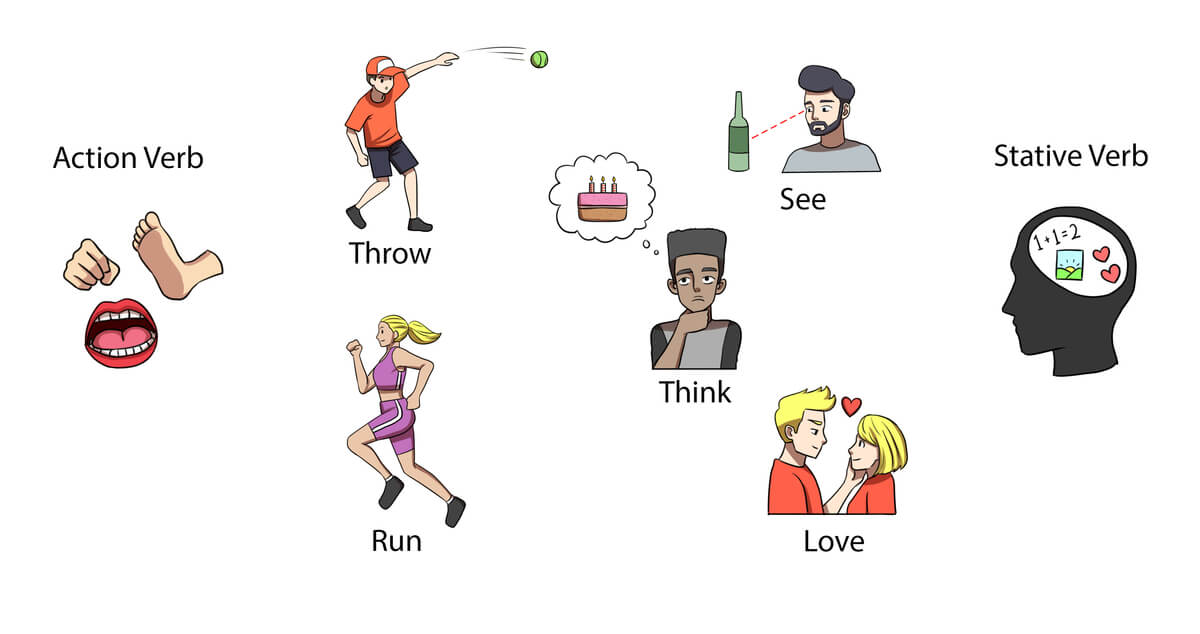Stative Verbs
- Stative verbs describe states or conditions that are static or unchanging. They do not show a physical action.
- Action verbs express an action, event, or change.
- Stative verbs are often used in the simple present tense and do not usually have continuous (-ing) forms.
Let's talk about a type of verbs called stative verbs. Understanding what they are and how they are different from action verbs is an important part of learning English.
What are Stative Verbs?
Stative verbs describe states, conditions, thoughts, feelings, and sensations. They are about what someone or something is. Normally, they do not involve any physical action.
Common stative verbs are: like, love, dislike, hate, see, feel, think, taste, hear, have, believe, smell.

Examples:
-
I love pizza.
"Love" is the stative verb (feeling).
-
He believes in ghosts.
"Believe" is the stative verb (thinking).
What are Action Verbs?
Action verbs are different from stative verbs. They express an action, event, or change.
Common action verbs are: eat, drink, take, kick, read, find, run, use, walk, get, laugh.

Examples:
-
She eats a hamburger.
"Eat" is an action verb.
-
I read a book.
"Read" is an action verb.
Stative verbs shouldn't be used in continuous tenses
Stative verbs do not usually have continuous (-ing) forms. This is because they represents a state or condition.
For example, we say "I know English", NOT "I am knowing English".
Pratiquez ce sujet avec le AI English Tutor
AI English Tutor vous apprendra la grammaire et la pratiquera avec vous sous forme de conversation. De plus, plus de 100 questions pratiques sur ce sujet pour consolider votre compréhension.
Essayez ALULA gratuitement sur votre téléphone ou votre tablette








Avez-vous des questions sur cette leçon ? Posez-les dans la section des commentaires, ci-dessous.